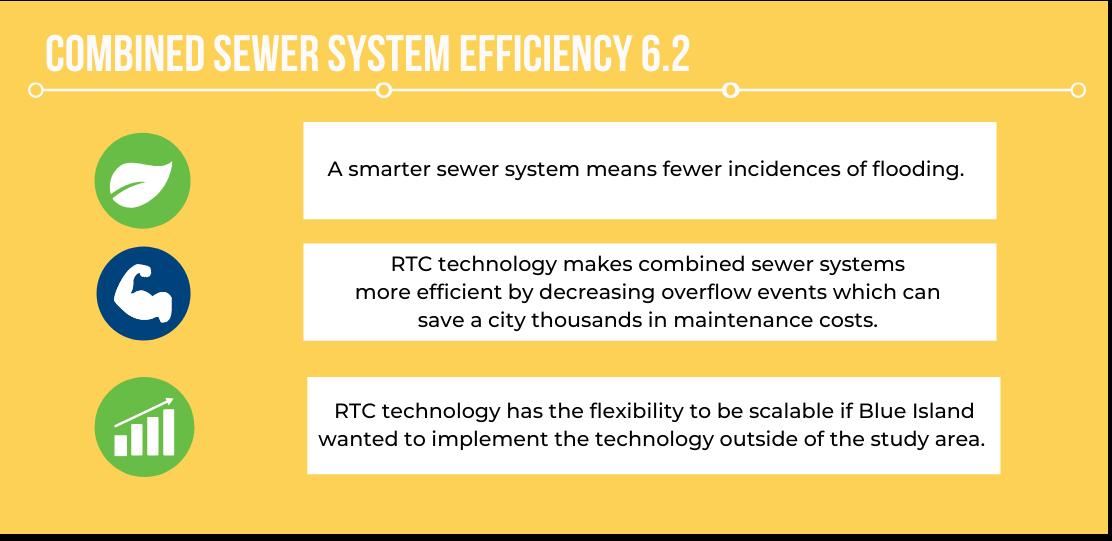
1 minute read
6.2 Combined Sewer System Efficiency
Stakeholders: City of Blue Island, Metropolitan Water Reclamation District of Greater Chicago
Timeline: 1-5 years
Advertisement
Most combined sewer systems are unable to handle modern day usage; they can often exceed their capacity resulting in overflow events.75 In 2012, Blue Island identified several sewer improvements in a Capital Improvements plan totaling over $6 million dollars, a substantial investment.76 Blue Island is currently adopting green infrastructure measures to reduce the burden on the sewer system, but another measure to reduce the number of overflow events would be to invest in smart data infrastructure geared towards monitoring and maintaining the combined sewer system within the municipality. This move could reduce overflow events by billions of gallons of water per year. 77
Increasing Efficiency
To work towards decreasing the amount of overflow events experienced in Blue Island, the city should
implement a Real Time Control (RTC) system to better control and adapt at what rate stormwater is released downstream into the combined sewer system. Case Study:
Hawthorne, California: Real-Time Monitoring to Prevent Sewer Overflows Hawthrone installed 50 SmartCover units (about 2.5% of the city’s manholes) real- time remote level monitoring sensors covering 66 of the hot spots in their sewer system. These sensors provided the city with real-time early warning of pre-flow events through alarms and the use of a data analytics tool to indicate when pipes were beginning to accumulate dirt; grit; fats, oils, and grease (FOG); or tree roots, which could change the daily pattern of water flow in the pipes. Since the installation of the real-time monitoring system, Hawthorne experienced only one overflow in its sewer collection system and was able to virtually eliminate sewer overflows in its collection system, saving more than an estimated $2 million in fines and mitigation costs since 2006. 78
RTC Implementation can be broadly defined as a system that adjusts facility operations in real-time due to online measurements. These measurements monitor water level, rainfall, and weather forecast at minimum. Depending on the needs of the municipality, an RTC system can also measure temperature, infiltration rate, and water quality parameters.
An RTC system would include the following elements: • Control devices (valves and gates) • Data communication infrastructure • Sensors to collect measurements





